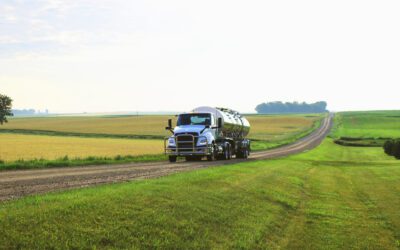By: Ryan Mertes Chief Solutions Officer, Ever.Ag
1. The Shift to Digital Operations
Before the COVID-19 pandemic changed just about everything, dairy plant operations required several people to be physically in the plant – operating equipment, receiving deliveries, and executing other plant operations. However, the immediate need to social distance and reduce physical contact accelerated a shift that was already well on its way to the dairy industry. Digitized plants often thrived during COVID-19 while others struggled. The primary reason: digitized plants enabled their subject matter experts to view and correct inefficiencies remotely. We’re also aware of several instances of maintenance experts remotely reviewing parts and training in-plant maintenance members how to repair lines from thousands of miles away, saving money and time on travel. In short, digitizing the plant lowered operational risk and made the plant staff more effective with access to the best resources, no matter the location.2. The Impact of Data and Business Intelligence
For decades, plant managers have been using data that is at least one or two days old. Consequently, plant operators were working on a reactionary basis—fixing what was broken and tracing problems back to data that wasn’t up to date. Unfortunately, managing what isn’t working well wastes time and resources. Now, as more plants have digitized processes, there’s often more data available than one person can absorb. Innovations in actionable intelligence allow subject matter experts to spend their time solving issues vs. finding them. Examples of these benefits include alerts to identify when a pipe is left open vs. waiting for someone to find it. Another example is supervisors receiving alerts to downtime issues in real-time, allowing them to clearly see where a problem exists – significantly limiting downtime and preventing re-work and traceability issues. As we look to the future, experts predict the impact of data intelligence on the dairy industry will increase and evolve even further — perhaps giving us a view into what will happen two days from now, two weeks from now, even two years from now. And that’s a significant change! Now, centralizing this information and using it to improve the plant effectively is the next challenge that must be overcome.3. Improved Yield and Mass Balance
Over the past 20 years, the dairy industry has notably reduced waste and provided new innovative product types to the market. It wasn’t that long ago when people believed the butterfat-to-casein ratio was the only one that mattered to yield. Now, we have identified dozens of factors that range from happenings at the farm through the plant. The ability to fractionate from a single original “ingredient” allowed the dairy industry to create thousands of products and offerings. And those efforts are why we’re able to meet consumer food demands today. Most importantly, this trend towards fully utilizing components emphasizes tracking activities to the component level. For example, if a plant is receiving 1 million pounds of milk a day, a 1% reduction in solids loss equates to approximately $400,000 per year in savings.Plant Digitization
Potential Savings
If a plant receives 1,000,000 pounds of milk per day, a 1% reduction in solids loss equals approximately $400,000 per year in savings.
pounds of milk per day
%
reduction in solids loss
per year in savings
4. The Dairy Plant of the Future
Artificial intelligence (AI) is the next step in innovation for the dairy industry, and how AI is applied will depend significantly on finding optimal conditions for three key areas: cost-effectiveness, reliability, and data quality.
These innovations could show up in various ways. One simple example is in forklift operations. Forklift operators are moving around a plant all day loading trucks and driving to another section of the plant to pick up more product, leaving a lot of room for potentially wasted time. In real-time, AI can determine what product needs to be picked up at which end of the plant, reducing redundant trips, and optimizing each drivers’ time and safety.
When it comes to improving plant operations overall, a new dairy plant can cost upwards of several hundred million dollars. However, we often find it is actually relatively cost-effective to optimize existing plants via digitization.
How can we optimize existing equipment for a better output? Here’s one example: by using AI to evaluate causes that impact operations. Isolating variables – such as quality – allows for a consistent product while improving costs; this also boosts consumer confidence that your great product will taste the same year after year.
Embracing Digitization
While we were aware of the value of digitization before COVID-19, the pandemic caused us to truly ‘look within our data’ to improve our plants. The plants that have embraced technology are running with fewer staff, and often creating more consistent production with lower costs. If we continue this rapid progress, I look forward to seeing what our industry looks like in 2030.


